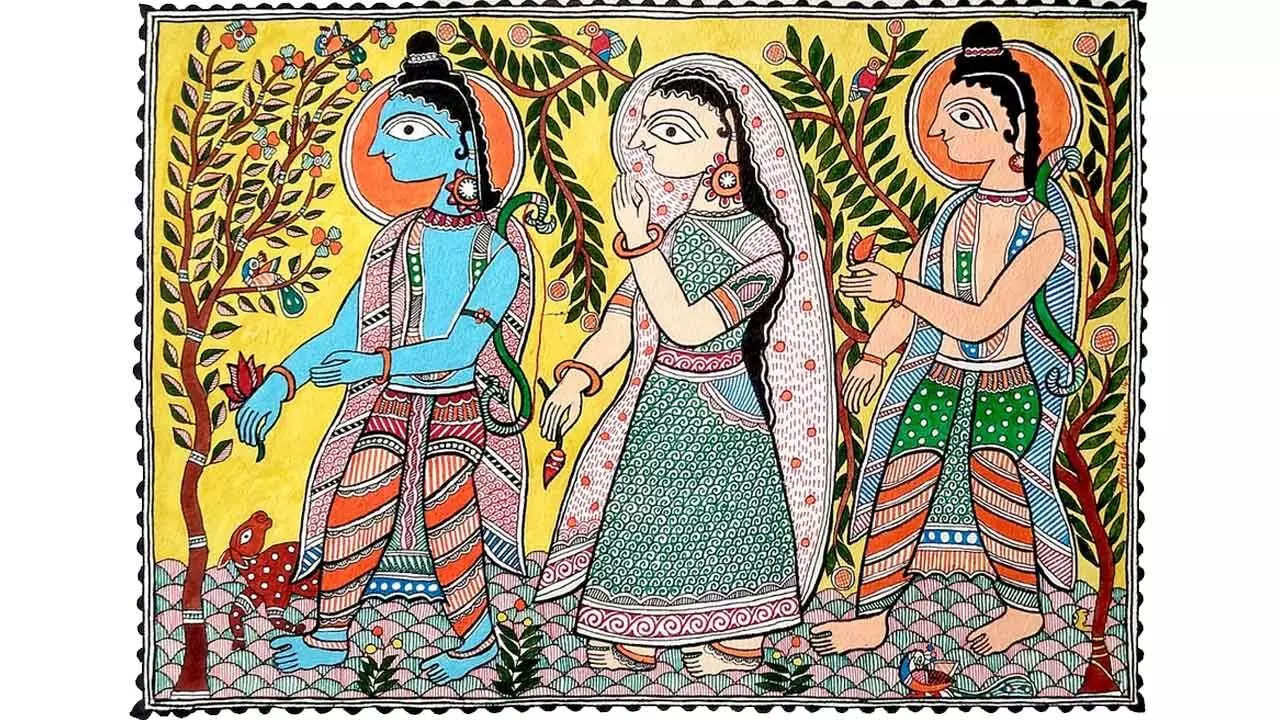Unveiling the secrets of Mithila Art form
The book Mithila Art: A 360 Degree Review of Madhubani Paintings offers a comprehensive exploration of this iconic Indian art form. With contributions from renowned scholars and artists, the book provides a rich tapestry of perspectives on Mithila Art's history, techniques, symbolism, and contemporary relevance
Unveiling the secrets of Mithila Art form

In an exuberant celebration of artistic heritage, the world recently witnessed the unveiling of book "Mithila Art: A 360 Degree Review of Madhubani Paintings." This comprehensive volume dives into the intricate beauty and profound cultural richness of Mithila Art, more widely known as Madhubani Art. Hailing from Bihar’s Madhubani district and the larger Mithila region of India and Nepal, this traditional art form has captivated artists worldwide.
The book, collaboratively edited by Binita Mallik, Dr. Minu Agarwal, and Dr. Laura Zizka, with management by Dr. Prashant Das, is set to attract both scholars and general enthusiasts with its meticulously curated content.
This landmark publication offers multifaceted perspectives on Mithila Art, featuring contributions from global scholars and esteemed Mithila artists. Initiated in Switzerland in 2018, the project incorporates insights from the US, France, and India, providing a truly global viewpoint. Visual excellence is achieved by the Mumbai-based DesignFlyover (DFO) team, headed by Shreya Sarda, which has crafted a visually captivating narrative through both text and illustrations. Forewords by notable figures such as Amitabh Kant from Niti Aayog, Chanchal Kumar, Chief Principal Secretary of the Bihar Government, and Nina Singh, ADG of Police Services, add credibility and diverse cultural perspectives to the volume. Beyond its academic merits, the book aims to preserve and promote the cultural essence of Mithila Art.
The volume is organized into insightful chapters that delve into various facets of Mithila Art. Prashant Das and Laura Zizka’s "A Survey of Known Scholarship" synthesizes existing research to frame the historical and cultural context. In "Visual Categorization," Binita Mallik and Rajat Mallik examine distinctive techniques and styles, while Helene Fleury’s "Historical Reception in the 1970s" discusses how these paintings entered the mainstream. Tammi M. Owens' "Bridal Iconography" analyzes the cultural symbolism of early 20th-century works. Nathan Lopez’s "Modern Perspectives" assesses Mithila Art's contemporary relevance, and Col. Satish Mallik’s "Commercialization Concerns" addresses the impact of public access on the art’s sanctity. "Inspirational Journeys" features interviews with luminaries like Padma Shri Godawari Dutta Ji and Bimla Dutt Ji, focusing on personal transformations through Mithila Art and future directions. Legendary Krishna Kumar Kashyap’s "Art-Integrated Education" advocates for blending art with formal education.
Published by Adarsh Publications, the book bridges traditional cultural heritage with modern academic discourse, making it a must-read for art aficionados and scholars alike.
The book launch event held at the prestigious Lalit Kala Akademi drew an impressive array of distinguished guests from various social, educational, and artistic fields. The presence of the Indian Consulate General in Nigeria and extensive media coverage underscored the growing global interest in this iconic art form. This release signifies a pivotal milestone in the journey of Madhubani Art, encapsulating its historical roots and contemporary relevance. It stands as an essential reference for those keen on understanding the vibrant legacy of Mithila Art, celebrating its essence and expanding global footprint.
The authors' endeavor to encapsulate the profound narrative and cultural significance of Mithila Art is nothing short of commendable.
(The author is a seasoned IT Professional currently working with an IT MNC in Bengaluru)

